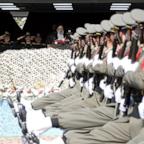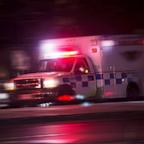Simulator Could Make Trains Safer
May 10, 2006 — -- Two trains collide and a passenger car is left teetering from a cliff. Unsure of where the exits are or how to escape, you wait in fear. It's likely that most people have visualized this scenario while riding public transportation, or have at least sat in suspense, watching this movie plot unfold.
With more than 414 million commuter train riders a year, several organizations have devoted time and effort to making our railways safer, and today, these agencies made an announcement that they may finally be on the right track.
The Washington Metropolitan Area Transit Authority, or WMATA, together with the Federal Railroad Administration and ENSCO Inc., unveiled the nation's first emergency evacuation simulator designed to help train first responders to emergency situations.
The emergency evacuation simulator is a passenger rail commuter car created to rotate as many as 180 degrees in 10-degree increments. The full rotation takes approximately two and a half minutes, a remarkably short amount of time considering the rig weighs 80,000 pounds and is 85 feet long.
The vision to build the device began three years ago with a handshake between the Federal Rail Administration and WMATA. The New Jersey Transit Authority donated the rail car and ENSCO Inc., a company that has provided technology to various industries since 1969, completed the simulator after 18 months.
The unveiling took place at the Carmen E. Turner Maintenance and Training Facility in Landover, Md., a colossal 16-acre warehouse. The WMATA spent nearly $50 million on the building alone, which has been open 24 hours a day for emergency responders since 2002.
The training facility, which is world renowned, welcomes rescue operators from as far away as Malaysia and trains these responders to practice terrorism and disaster response exercises. These exercises range from drills to combat biological and chemical warfare to how to put out fires and to how to balance a derailed train.
In addition to the new "roll-over rig," the training center has two metro cars and one other New Jersey Transit Authority passenger car used to create a practice ground for responders.




